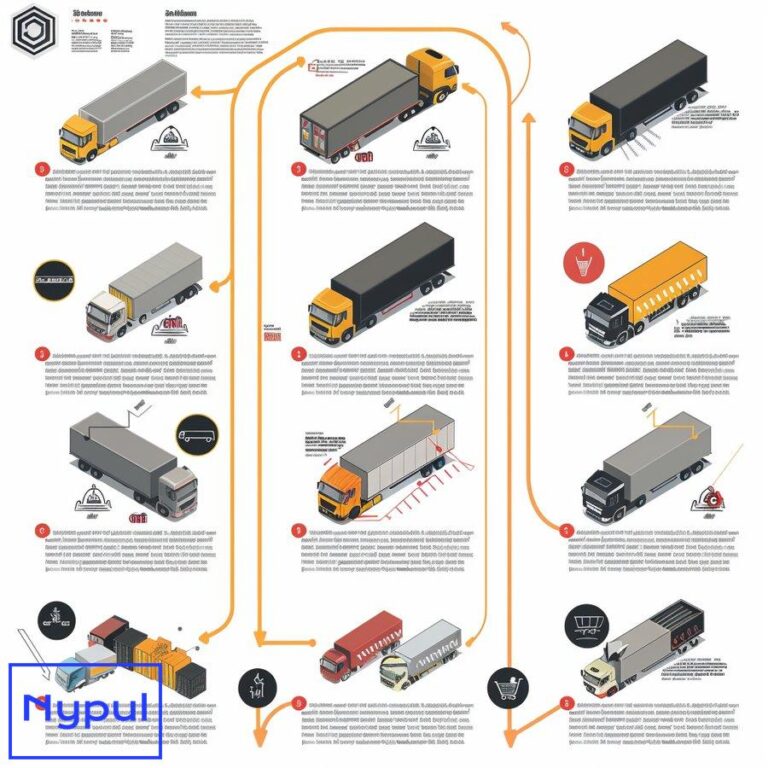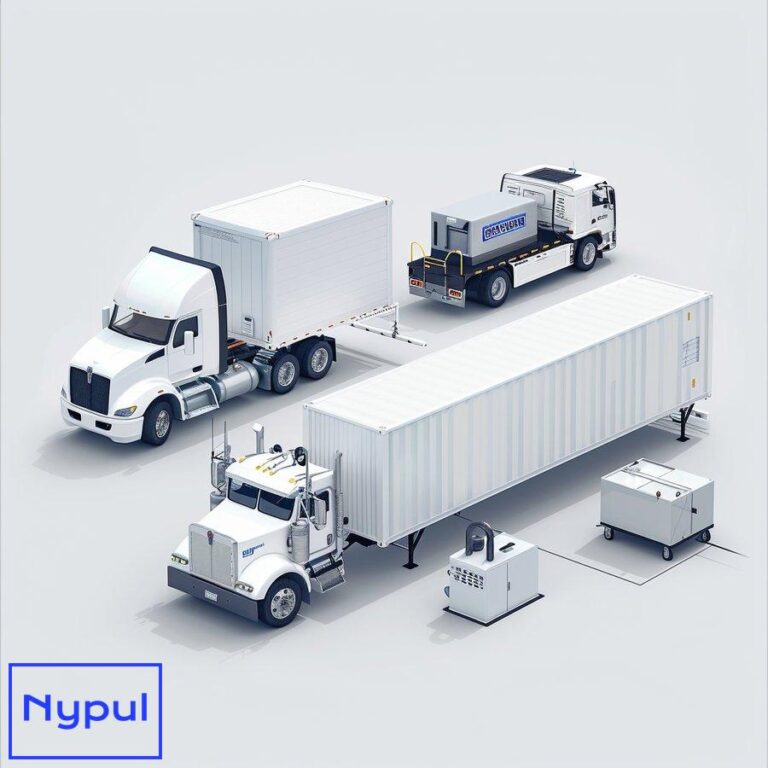How Do I Prepare for Storage Container Delivery
What should I know before scheduling a storage container delivery?
Understanding the logistics of storage container delivery is essential for a seamless experience. Before scheduling, consider the following aspects:
Delivery Timeline
Most container deliveries occur within 3 to 7 business days after the order is placed. This timeline can vary based on factors like the container’s size, the delivery location, and the service provider’s schedule. Planning ahead ensures you have the container ready when needed.
Container Size and Type
Choosing the right container size is crucial. Common sizes include 20-foot and 40-foot containers. A 20-foot container is approximately equivalent to a large parking space, while a 40-foot container is about twice that size. Measure the intended storage area to ensure a proper fit.
Site Preparation
Site preparation is a critical step. The area must be dry, level, and stable to support the container’s weight. Soft or muddy ground can lead to delivery complications, so assessing the ground conditions is necessary.
Communication with the Delivery Team
Effective communication with the delivery team is vital. Provide them with essential details such as the delivery address, any specific site requirements, and contact information. This ensures they can reach you if issues arise during delivery.
Local Regulations and Permits
Check local regulations regarding container placement. In some areas, permits may be required, especially if the container will be placed on public property. Understanding these regulations beforehand can prevent delays.
Insurance Considerations
Consider insuring your container and its contents. This provides peace of mind against potential damages during transit or while on-site.
How do I choose and prepare the right site for my storage container?
Selecting and preparing the right site for your storage container involves several key factors:

Assessing Accessibility
Ensure the site is easily accessible for the delivery truck. The truck requires a minimum clearance of 12 feet wide and 15 feet high for safe maneuvering. Check for any obstacles such as power lines, tree branches, or overhanging structures that could impede delivery.
Ground Conditions
The ground must be firm and stable. Avoid areas that are prone to water pooling or have soft, muddy soil. If the ground is unstable, consider reinforcing it with gravel or a concrete pad to provide a solid foundation.
Proximity to Utilities
If you plan to use the container for long-term storage or as a workspace, consider its proximity to utilities like electricity and water. This can facilitate easier access to necessary services.
Space Requirements
Space requirements vary based on the container size. For a 20-foot container, ensure at least 75 feet of linear space for delivery; for a 40-foot container, allocate around 120 feet. This space allows the truck to maneuver and position the container correctly.
Environmental Considerations
Choose a location that minimizes environmental risks. Avoid low-lying areas where water may accumulate, and ensure the site is not prone to flooding or erosion.
Site Preparation Checklist
| Preparation Step | Description |
|---|---|
| Clear Obstructions | Remove any debris, vehicles, or other obstacles from the delivery area. |
| Level the Ground | Ensure the ground is level and compacted to support the container’s weight. |
| Check for Drainage | Ensure the site has proper drainage to prevent water pooling. |
| Verify Accessibility | Confirm that the delivery truck can maneuver safely in the area. |
What ground preparation is necessary for a storage container?
Ground preparation is vital for ensuring the stability and longevity of your storage container. Here are the essential steps to follow:
Leveling the Ground
The ground must be level to prevent the container from shifting or settling unevenly. Use machinery such as an excavator or a compactor to achieve a flat surface. If you’re using a gravel pad, ensure it is evenly spread and compacted.
Choosing the Right Base Material
Several options are available for the base material:
-
Gravel Pad: This is the most common and effective choice. A gravel pad allows for drainage and prevents moisture buildup, which can lead to rust and deterioration.
-
Concrete Foundation: For long-term storage solutions, a concrete slab provides excellent stability and durability. However, it requires more effort and expense to install.
-
Cap Blocks: These concrete blocks can elevate the container slightly off the ground, allowing for airflow and preventing moisture accumulation.
Drainage Considerations
Ensure the site is graded to direct water away from the container. This prevents water from pooling around the base, which can cause rust and structural damage over time.
Ground Preparation Checklist
| Preparation Step | Description |
|---|---|
| Level the Ground | Use machinery to create a flat surface for the container. |
| Choose Base Material | Select gravel, concrete, or cap blocks as the foundation. |
| Ensure Proper Drainage | Grade the site to direct water away from the container. |
How can I ensure proper access and clearance for the delivery truck?
Ensuring proper access and clearance for the delivery truck is crucial for a successful container delivery. Here are the steps to follow:
Assessing the Delivery Route
Evaluate the delivery route for any potential obstacles. The truck requires:
- Minimum width of 12 feet
- Height clearance of 15 feet
Check for overhead power lines, tree branches, and other obstructions that could hinder delivery.
Space for Maneuvering
The delivery truck needs ample space to maneuver. For a 20-foot container, allocate at least 75 feet of linear space; for a 40-foot container, provide 120 feet. This space allows the driver to position the container accurately.
Communicating with the Delivery Team
Inform the delivery team of any specific site conditions or potential obstacles. This communication helps them prepare for any challenges they may encounter during delivery.
Access Considerations
If the delivery site is gated or requires special access, ensure that the driver has the necessary permissions and access codes.
Access and Clearance Checklist
| Requirement | Description |
|---|---|
| Minimum Width | Ensure a clearance of at least 12 feet wide for the truck. |
| Height Clearance | Verify that there is a minimum height clearance of 15 feet. |
| Maneuvering Space | Allocate 75 feet for a 20-foot container and 120 feet for a 40-foot container. |
| Communicate with Delivery Team | Provide details about potential obstacles and access requirements. |
What foundation and support options should I consider for my storage container?
Choosing the right foundation and support for your storage container is essential for stability and longevity. Here are the options to consider:
Gravel Pad
A gravel pad is a popular choice due to its affordability and ease of installation. It provides excellent drainage and can be adjusted for leveling as needed.

Benefits:
- Economical and DIY-friendly
- Allows for drainage and prevents moisture buildup
- Easy to level and maintain
Concrete Foundation
For a more permanent solution, a concrete foundation offers superior stability and durability. This option is ideal for long-term storage or if the container will be used as a workspace.
Benefits:
- Provides a solid and stable base
- Excellent for heavy loads
- Long-lasting and low-maintenance
Cap Blocks
Cap blocks can elevate the container slightly off the ground, allowing for airflow and preventing moisture accumulation. This option is suitable for those who prefer a simpler installation.
Benefits:
- Easy to install and adjust
- Provides stability and airflow
- Cost-effective compared to a full concrete slab
Cross Ties
Using wooden cross ties or railroad ties can also elevate the container. This option allows for airflow and can be adjusted for leveling.
Benefits:
- Environmentally friendly if using recycled ties
- Provides good stability
- Easy to level and adjust
Foundation and Support Options Checklist
| Option | Benefits |
|---|---|
| Gravel Pad | Economical, allows drainage, easy to maintain. |
| Concrete Foundation | Solid base, excellent for heavy loads, long-lasting. |
| Cap Blocks | Simple installation, provides stability and airflow. |
| Cross Ties | Environmentally friendly, easy to level, provides good stability. |
What steps should I take on delivery day to ensure a smooth process?
Delivery day requires careful planning to ensure a smooth process. Follow these steps:
Confirm Delivery Time
Confirm the delivery time with the service provider a day before. This ensures you are prepared for the arrival of the truck.
![]()
Prepare the Site
Ensure the delivery site is clear of obstacles. Remove any vehicles, debris, or other items that could hinder the delivery process.
Be Present During Delivery
Have someone present at the delivery site to guide the driver. This person can provide instructions on where to place the container and ensure the process runs smoothly.
Communicate with the Driver
Communicate any specific instructions or preferences to the driver. This helps them position the container according to your needs.
Post-Delivery Inspection
After the container is delivered, inspect it for any damage. Report any issues to the service provider immediately.
Delivery Day Checklist
| Step | Description |
|---|---|
| Confirm Delivery Time | Verify the delivery time with the service provider. |
| Prepare the Site | Clear the area of obstacles and ensure accessibility. |
| Be Present During Delivery | Have a designated person available to guide the driver. |
| Communicate with the Driver | Provide any specific instructions for container placement. |
| Post-Delivery Inspection | Check the container for damages and report any issues. |
How do I handle post-delivery inspections and security measures?

After the delivery of your storage container, conducting a thorough inspection and implementing security measures is essential. Here’s how to proceed:
Conducting a Thorough Inspection
Inspect the container for any damages that may have occurred during transit. Look for:
- Dents or scratches on the exterior
- Damaged seals or doors that do not close properly
- Interior conditions, checking for moisture or signs of rust
Document any issues with photographs and report them to the service provider immediately.
Implementing Security Measures
To protect your container and its contents, consider the following security measures:
-
Locking Mechanisms: Invest in high-quality padlocks or locking systems to secure the container. Ensure that all doors are locked when not in use.
-
Surveillance Systems: If the container is used for long-term storage, consider installing security cameras or motion sensors in the vicinity.
-
Regular Inspections: Schedule regular inspections of the container to check for any signs of tampering or wear.
Post-Delivery Inspection and Security Checklist
| Step | Description |
|---|---|
| Conduct a Thorough Inspection | Check for damages and document any issues with photographs. |
| Implement Locking Mechanisms | Use high-quality locks to secure the container. |
| Consider Surveillance Systems | Install cameras or motion sensors for added security. |
| Schedule Regular Inspections | Regularly check the container for signs of tampering or wear. |
This comprehensive approach to preparing for storage container delivery ensures a smooth process, from site selection to post-delivery security. By following these guidelines, you can maximize the utility of your storage container while minimizing potential issues.




